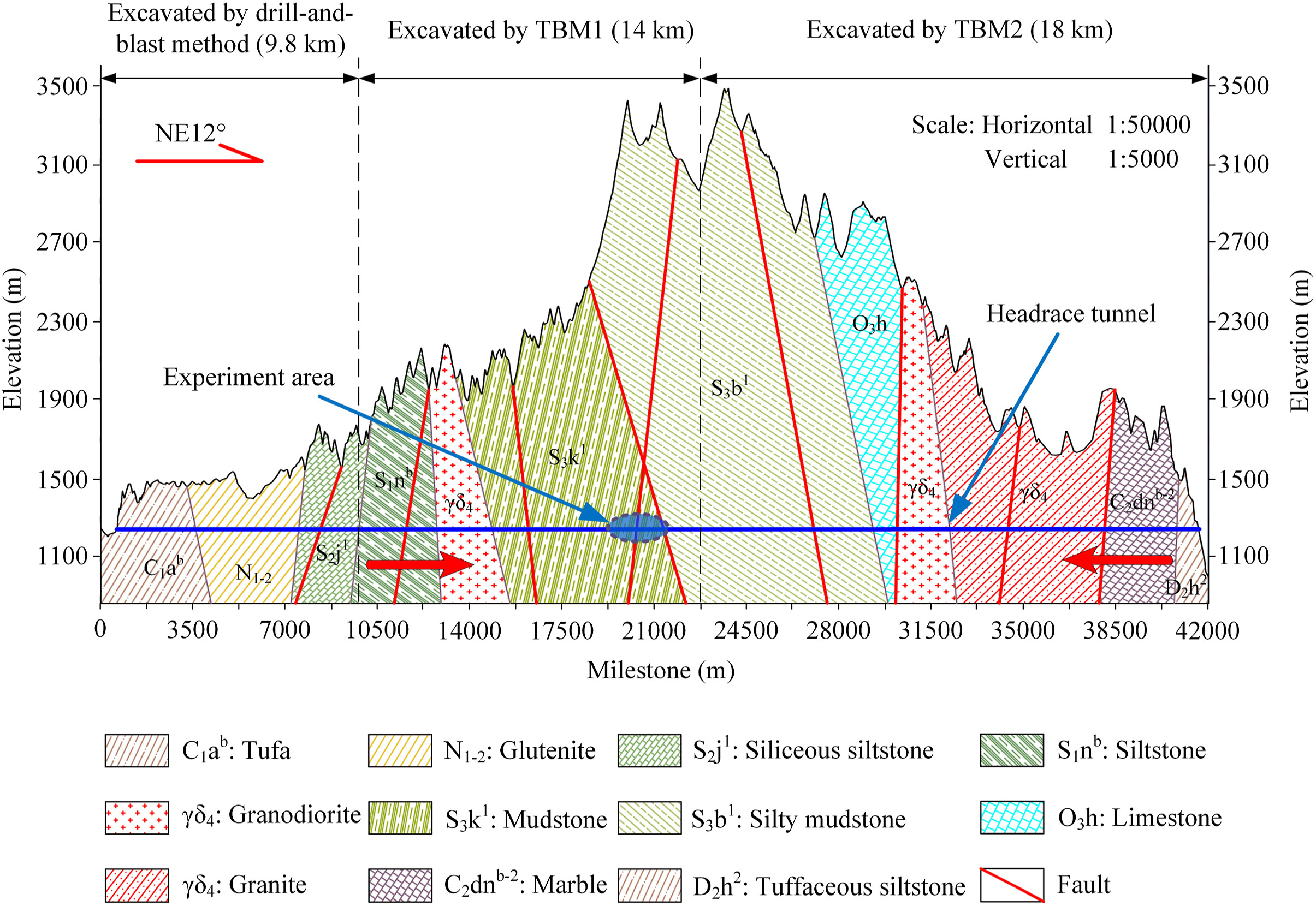JRMGE / Vol 14 / Issue 2
Attenuation characteristics of impact-induced seismic wave in deep tunnels: An in situ investigation based on pendulum impact test
Jian Wu, Quansheng Liu, Xiaoping Zhang, Chuiyi Zhou, Xin Yin, Weiqiang Xie, Xu Liang, Jiaqi Huang
Show More
a PowerChina Huadong Engineering Corporation Limited, Hangzhou, 311122, China
b Key Laboratory of Safety for Geotechnical and Structural Engineering of Hubei Province, School of Civil Engineering, Wuhan University, Wuhan, 430072, China
c State Key Laboratory of Water Resources and Hydropower Engineering Science, Wuhan University, Wuhan, 430072, China
d Hangzhou Urban Infrastructure Construction Management Center, Hangzhou, 310009, China
2022, 14(2): 494-504. doi:10.1016/j.jrmge.2021.12.005
Received: 2020-12-10 / Revised: 2021-11-09 / Accepted: 2021-12-21 / Available online: 2021-12-30
2022, 14(2): 494-504.
doi:10.1016/j.jrmge.2021.12.005
Received: 2020-12-10
Revised: 2021-11-09
Accepted: 2021-12-21
Available online: 2021-12-30
The radiated seismic energy is an important index for the intensity assessment of microseismic (MS) events and the early warning of dynamic disasters. However, the energy of MS signals is significantly attenuated due to the heterogeneity and viscous damping of rock media. Therefore, the study on attenuation characteristics of MS signals in underground engineering has practical significance for the accurately estimation of radiated seismic energy. Based on a pendulum impact test facility and MS monitoring system, an in situ investigation was carried out to explore attenuation characteristics at a deep tunnel. The results show that the seismic energy and peak particle velocity (PPV) attenuation are exponentially related to the propagation distance. The attenuation coefficient of energy is larger than that of PPV. With the increase in the input impact-energy, the seismic energy attenuation coefficient decreases as a power function. An empirical relationship between energy attenuation coefficient and wave impedance of rock mass was established in this scenario. Moreover, the time-frequency characteristics and energy distribution laws of impact-induced signals were investigated by the continuous wavelet transform (CWT) and wavelet packet analyses, respectively. The dominant frequency of signals decreases gradually as the propagation distance increases. Based on the energy attenuation characteristics, a new method was proposed to calculate the released source energy of MS events in the field. This study can provide an insight into energy attenuation characteristics of seismic waves and references for attenuation correction in seismic energy calculation.
Keywords: Attenuation characteristics, Microseismic monitoring, Pendulum impact facility, Seismic energy, Deep tunnels
Show Figure(s)
Share and Cite
Jian Wu, Quansheng Liu, Xiaoping Zhang, Chuiyi Zhou, Xin Yin, Weiqiang Xie, Xu Liang, Jiaqi Huang, 2022. Attenuation characteristics of impact-induced seismic wave in deep tunnels: An in situ investigation based on pendulum impact test. J. Rock Mech. Geotech. Eng. 14 (2), 494-504.
Article Data
Author(s) Information
Jian Wu
✉️ wu_j23@hdec.com

Jian Wu obtained his PhD degree in Civil Engineering from Wuhan University, China, in 2021. He is currently working as a postdoctoral fellow at PowerChina Huadong Engineering Corporation Limited, Hangzhou, China. His research interests include (1) experimental investigations on the propagation and attenuation characteristics of seismic wave; and (2) microseismic monitoring and warning of rockbursts in deep tunnels. He has been participated in several underground projects in China on rockburst risk and disaster assessment.

